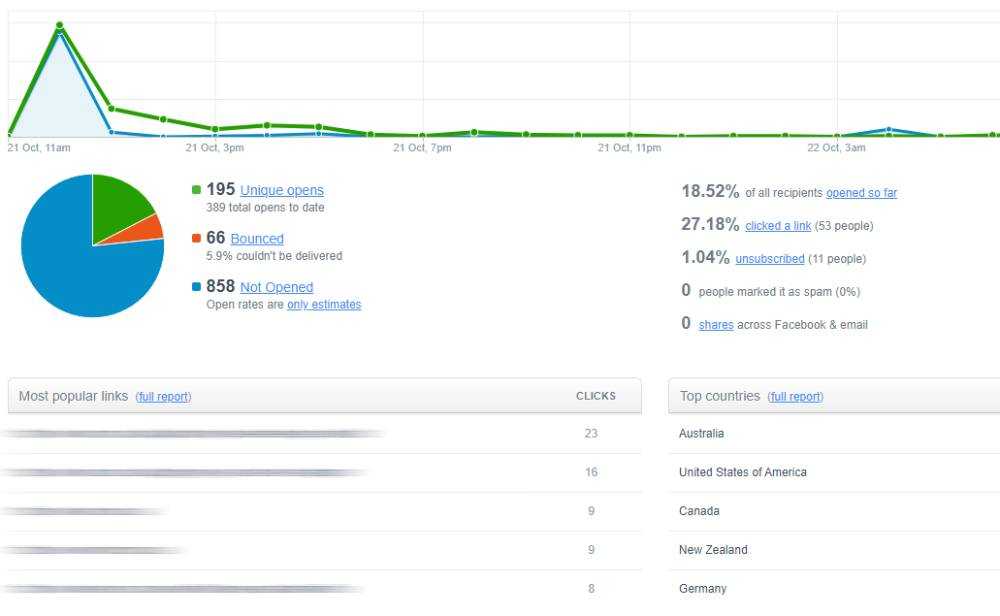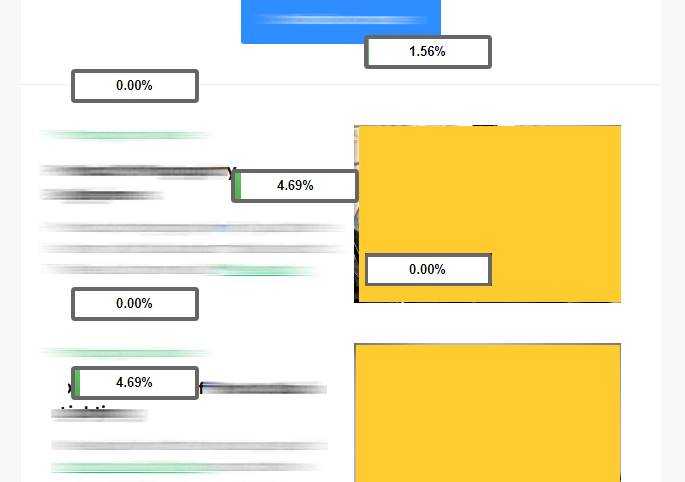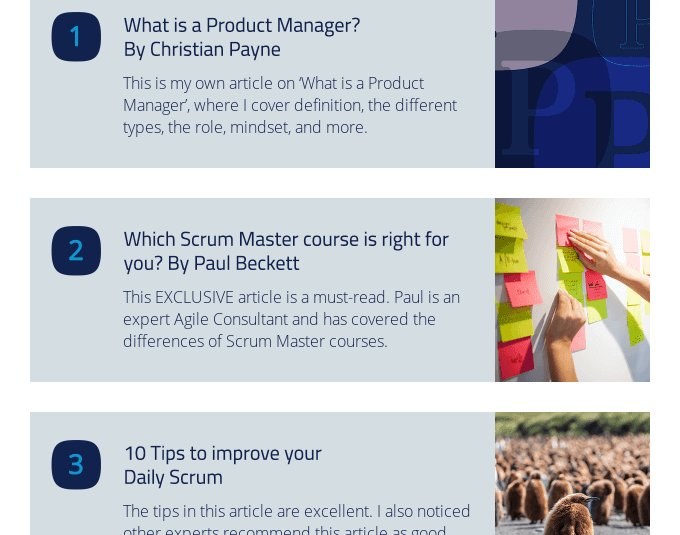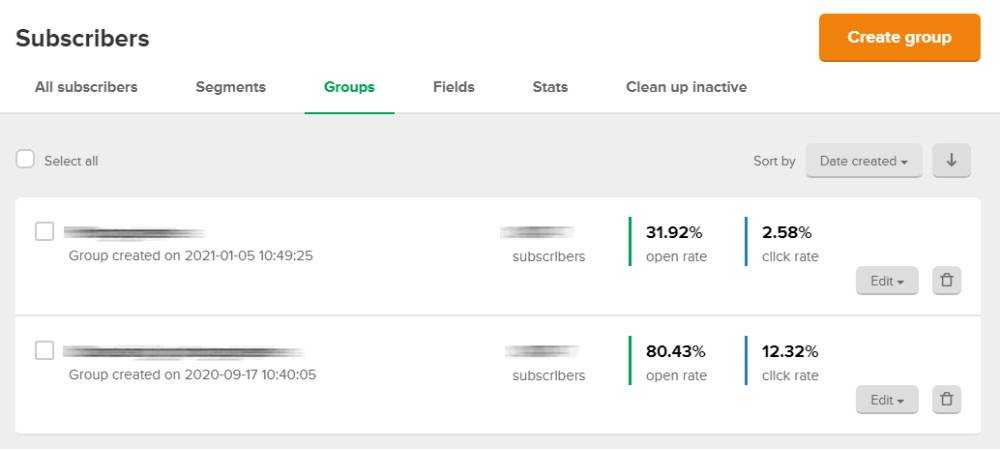How to Review and Improve Your Email Marketing
Updated 31 May 2021 (Published 20 March 2018) by Miles in Digital Marketing
Does email marketing still have an important part to play? Absolutely! The infamous marketing tool of the 90s is still a valuable way to reach your audience, no matter where they are in the buyer cycle. In this article, we'll discuss how to improve your email marketing

Email marketing still has a place in any customer nurturing or lead generation strategy, so let's look at four steps to review and improve your email marketing. Whilst this article focusses mostly on email newsletters, there are obviously a a number of ways to market yourself by email, of which the following strategies and tips can also apply.
The steps we'll cover, are;
- Review your existing email marketing
- Crafting fantastic content
- Polish that email design
- Growing your recipient list
- Segmentation and targeting
Ok, without any further, let's dive in!
Review your existing email marketing
Before we can even considering looking at ways to improve your email marketing, we must take stock of what you’re currently doing, and review what’s working and what isn’t. This helps you create the basis of your future strategy.
There are two main items to consider here, existing reader feedback and metrics. In a way, you could say emotions and the actual data.
Existing reader feedback
What feedback have you previously received about your email newsletter or marketing? Have you had any criticism? Ask your team and collate what you can, both good and bad.
If you feel you need more feedback, try asking a few of your closest customers or subscribers or even ask them directly in the next newsletter. I've been known to just ask 'What's your favourite aspect of our newsletter?' or 'What would you like to see us include in this?'
Campaign data
The next step to reviewing your existing email marketing, is to look at your email campaign data. Depending on what system you use, there may be slight interface or terminology differences however what we're most keen on, are open and click through rates.

For example, in the above campaign overview, you can see that only 18.52% of recipients opened the email, and that 27.18% of those people actually clicked on anything. Pretty average campaign statistics. The interesting part here is to review the most popular links and see what they clicked on.
Speaking of click through rates, most of the major email marketing software products allow you to review an overlay of the sent email as well, and allow you to see which exact links were clicked.
For example, in many email newsletters, the article title, image and a read more link are all clickable. So, even though we see 100 people clicked to Article B, which link was it that drive them to click?

If you have ever done any A/B testing of your email marketing, this is the perfect time to review that, and see what has worked in the past.
All of the above feedback and data really help us understand what we need to do first to improve your email marketing.
Crafting fantastic content
Now that you've absorbed all the data and feedback, you should have a fairly good idea of what content has worked best for you in the past, and which content wouldn't be missed if you didn't use it again. So the next step in our task to improve your email marketing, is to decide what kind of content you will be sending to your subscribers, moving forward.
We all appreciate that content can be one of the hardest things to create, as it’s the most time consuming. For many people, it is hard to come up with topics that they feel will resonate with their subscribers. You may want to review this list of 33 email newsletter content ideas to stimulate your creative thinking.
One method I have seen used well, is to subscribe to all of your competitors email newsletters. Not so much to steal their topics, however it's a good way to find content gaps, that is, topics that your competitors aren't covering yet are worthwhile to write about.
Consider your messaging
If you really want to improve your email marketing, you need to also consider your messaging.
For example, at Bam Creative, we want to empower people through information. This is exactly the same philosophy we have with this blog, our social media and other content. By doing so, we aim to position ourselves an authority in the digital strategy space. And most importantly, we’re not about the cash grab. We want to provide value to our audience, first and foremost.
Always think WIIFM
When I say WIIFM, I mean What's In It For Me, and I don't mean me, I actually mean my subscribers. At the end of the day, your email newsletter isn't for you to read, or for your team. It is for your target customers, both existing and likely prospective customers as well. What do they want to learn or understand? What pain points can you help them with?
Polish that email design
Another thing to consider when creating an effective email newsletter, is the actual design of your email. As we want our subscribers to read it from top to bottom, we want to ensure we use a fairly simple layout, which won't confuse or overwhelm our readers.
A typical layout is an image, article title, and intro blurb. An example of this is below. This is just one example of how to create content for your email marketing strategy.

Previously at Bam Creative, we've worked to keep things as organic as possible, so we are careful to really limit the amount of images in an email, and keep it super minimalist.
Some of our best received and shared emails have looked like a simple letter, that has come directly from someone in our team, which is great if you only have one topic or goal to achieve.
It’s up to you to decide how your emails look, depending on your message and goals.
Embrace mobile design
You'll find a large amount of your subscribers will read your email newsletter on their mobile phones or tablets. No matter the mobile device, your design and content needs to work nicely on it. Taking a mobile first design philosophy will help ensure these people aren't left alienated by complex layouts or difficult to read content.
In April 2021, the largest market share email client at a whopping 38.3% was the Apple Mail app on iPhone.
Source: Litmus
Growing your recipient list
Identifying the goals of your email marketing strategy will guide what you need to do to get to those goals. You may not have any specific goals currently, and that's fine. Moving forward, you may want to consider using your email marketing strategy to increase leads and sales.
Before you can get to that point, you need to decide:
- Who you are trying to target
- How you will grow your recipient list
- What kind of content that target audience would be interested in
- What kind of information would they find relevant
Growing a list isn’t without its pain points. It may take a number of iterations to get it correct. Remember, you also need to make it clear to new people signing up to our list that they won’t be spammed.
There are plenty of opportunities for places to add an email subscribe form or link. Common places include in check out processes with a tick box, or a short email address only form in the footer of most pages. Other methods include a pop up window as someone shows intent to exit your website, or in the footer of all your employees emails.
Segmentation and targeting
Creating relevant content for specific groups means that you can improve open and click rates within specific email marketing lists.
Segmentation can be based on an infinite number of factors such as demographics, lifestyle or even where the customer is on the buyer cycle but it also depends on your industry and your goals.
Understanding how to segment your list can start by defining your goals and working backwards: who will you connect with, what will you offer, and what are you trying to have them achieve to get you to meet your goals? If you have an existing mail list, a survey with an incentive is a great way to be able to get real feedback from your list which can help you not only understand them better, but also to create the content and actions they will content with.

Putting the pieces together for your mailing lists, your very broad segments might be:
- Pre-sale: once a prospect has engaged with us for a project proposal, we’re able to further inform them about their enquired service, our processes and values and the project team. It means that we’re able to connect with prospective client when they’re most engaged.
- During a project: When we’re working away on the project, sometimes the lines of communication go quiet which is often a concern to our clients. To keep the lines of communication open, we would create specific content related to their projects such as timeline information, helpful information specific to their product and what they can do after their website goes live, as an example.
- After-care: once a project is finished, we’re able to send through information based on the common post-project questions we receive such as lost passwords, how to set up email, SEO tips and tricks they can action themselves. This content would be based on the products
These are very broad segments and ideas for lists that need to be refined but forms the basis of where we want to go.
Improve your email marketing: action steps
To recap, the main action points to improve your email marketing, are;
- Review your existing email marketing
- Crafting fantastic content
- Polish that email design
- Growing your recipient list
- Segmentation and targeting
In the next few episodes, we’ll keep you up to date with how we’re going and share failures and successes with you.


